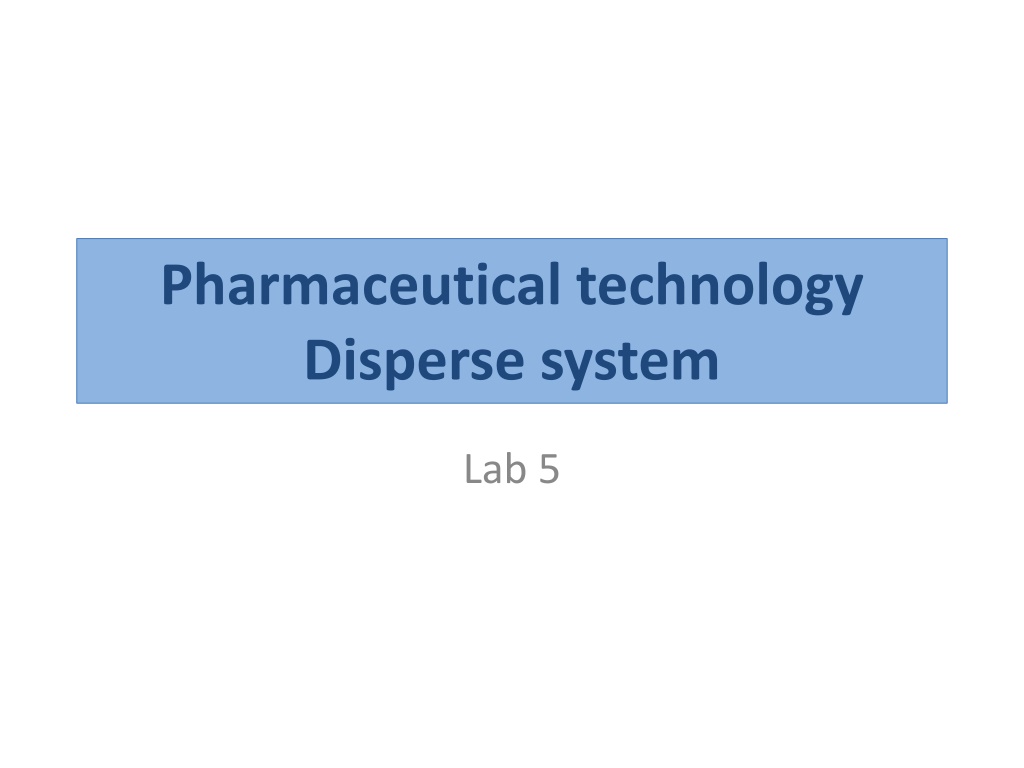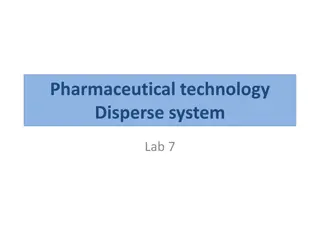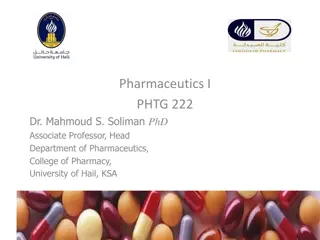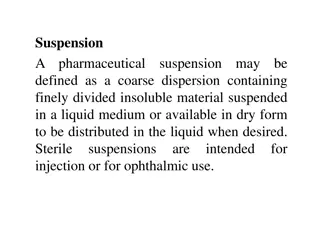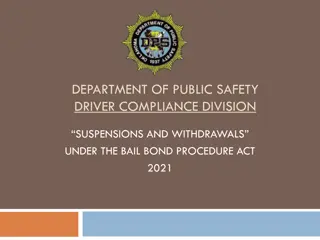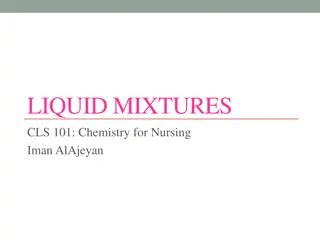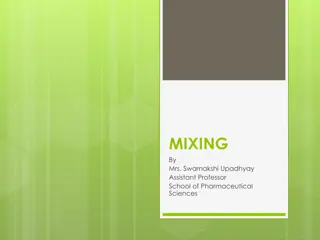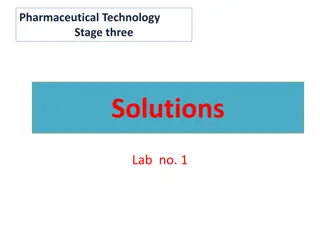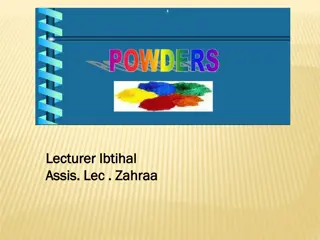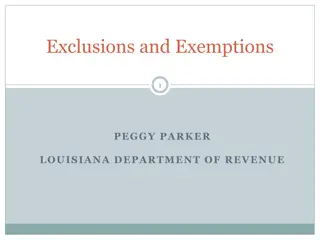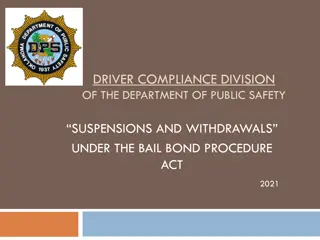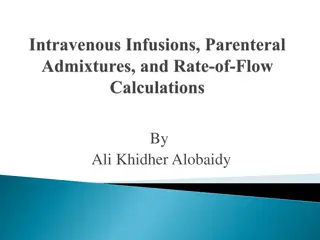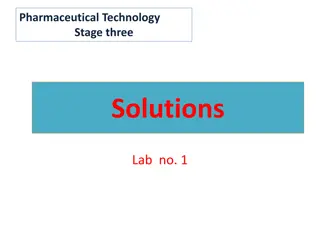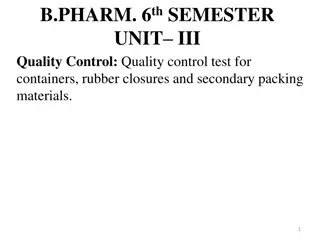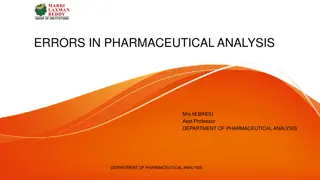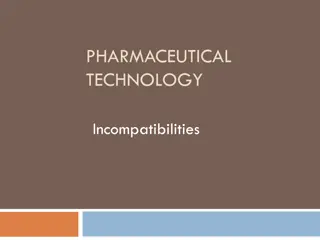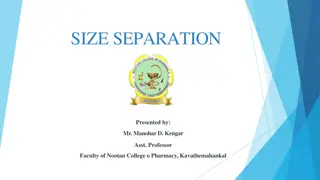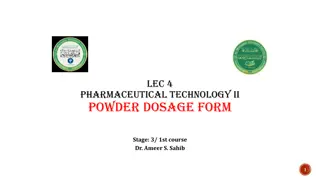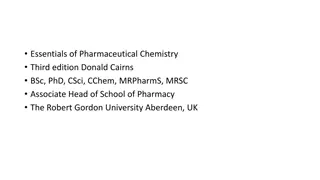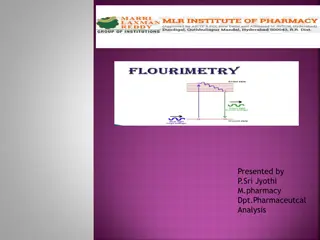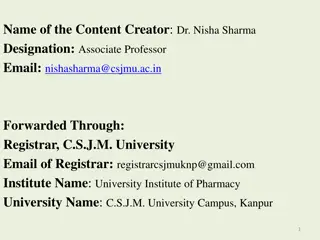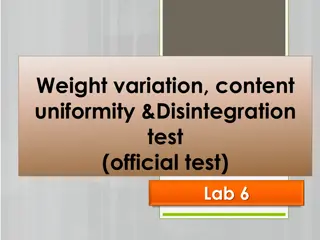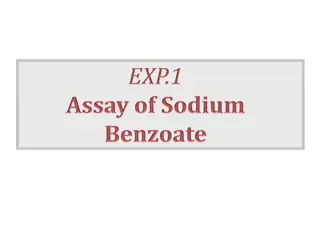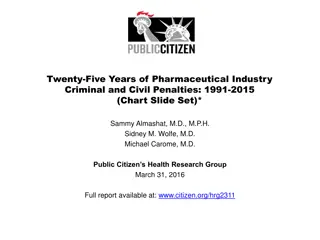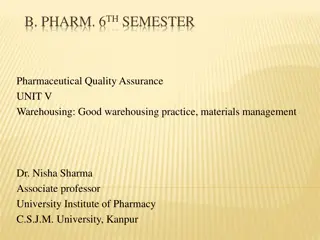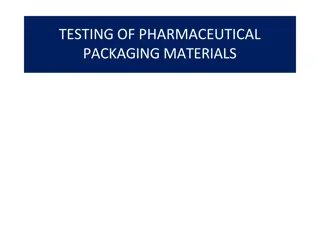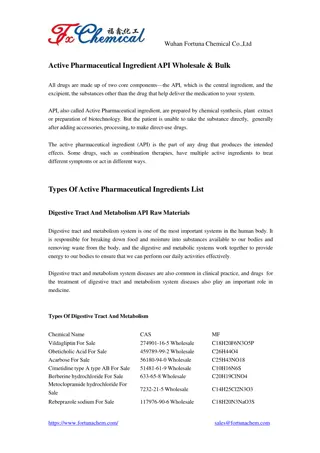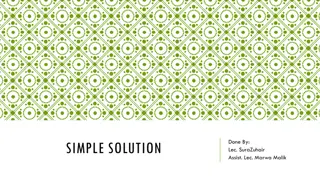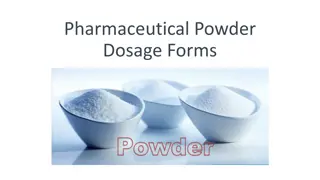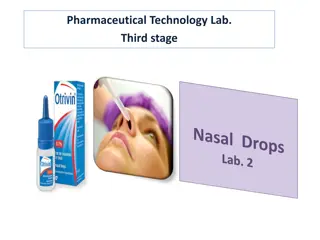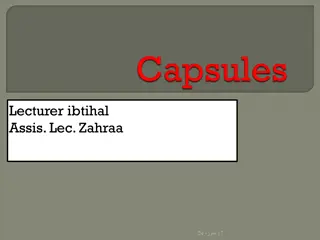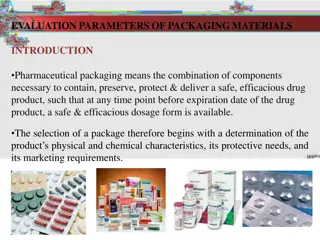Understanding Pharmaceutical Suspensions: Types and Preparation
Discover the world of pharmaceutical suspensions, from the different types based on dosage form and particle size to the desired features and classifications. Learn about the advantages of using suspensions, essential characteristics, and the general method of preparation for suspensions containing diffusible solids.
Uploaded on Sep 19, 2024 | 0 Views
Download Presentation

Please find below an Image/Link to download the presentation.
The content on the website is provided AS IS for your information and personal use only. It may not be sold, licensed, or shared on other websites without obtaining consent from the author. Download presentation by click this link. If you encounter any issues during the download, it is possible that the publisher has removed the file from their server.
E N D
Presentation Transcript
Pharmaceutical technology Disperse system Lab 5
Disperse system Disperse system composed from: Dispersed phase : which is the substance distributed. Dispersion medium : which is the vehicle
Type of dispersion according to dosage form Ointment, paste ( solid in solid ) Emulsion (liquid in liquid) Suspension (solid in liquid)
Type of dispersion according to particle size 2. Fine dispersion : (0.5-10 m) 1.Course dispersion : (10-50 m) 3.colloidal dispersion : (1nm- 0.5 m)
Suspension Preparation containing finely divided particles distributed somewhat uniformly through out a vehicle in which drug exhibit a minimum degree of solubility. Advantages of suspensions : 1. it is used in preparation of certain drugs that are chemically unstable in solution form (ex. Antibiotics) 2. It is used to overcome the disadvantages of disagreeable taste of certain drugs when given in solution form (ex. metronidazol suspension)
Features desired in pharmaceutical suspension 1. A properly prepared pharmaceutical suspension should settle slowly and should be readily redispersed upon gentle shaking. 2. The characteristics of suspension should be such that the particle size of suspension remains fairly constant through out long periods of undistributed standing (i.e should not able to form hard cake ) 3. The suspension should pour readily and evenly from it s container .
Classification of suspension 1. Suspension containing diffusible solids. 2. Suspension containing indiffusible solids. 3. Suspension containing precipitate forming liquid. 4. Suspension containing poorly wettable solids. 5. Suspension produced by chemical reaction.
1-Suspension containing diffusible solids Diffusible powders are light and easily wetted by water. they mix readily with water, so on shaking , the powders are evenly diffused throughout the liquid for sufficient time to ensure uniform distribution in each dose. General method of preparation of suspensions containing diffusible solids: 1. Grind down the solid ingredients to fine powder by using a mortar and pestle. 2. Mix insoluble powder in mortar beginning firstly by ingredient of smallest bulk and diluting it with others in increasing order of bulk using amount approximately equal to the bulk already in mortar , this process is called (geometric dilution ). 3. Subtract the volume of liquid ingredients from of the vehicle. 4. The remaining amount of the vehicle divided into 3 parts : o First part added to mortar in order to prepare a smooth paste by trituration . o The second part add to dilute the smooth paste. o While the third part add to wash the mortar . 5. Filter by muslin gauze. 6. add the liquid ingredients . 7. Transfer the content of mortar to measuring cylinder and complete the volume of the prescription to the final volume by addition of the remaining amount of vehicle.
Notes:- The soluble non volatile materials added to the portion of vehicle used for dilution. Volatile material added to the suspensions before complete the volume. Syrup and glycerin added to the powder in the mortar before the formation of smooth paste. dye added after the formation of smooth paste before dilution in order to penetrate the insoluble particles.
Experimental work Rx1 Light magnesium carbonate gr x Sodium bicarb. gr xv Chloroform water q.s Ft. Mist. Mitt. iv Sig. 2 tsp q.i.d i Method of preparation : By general procedure method. Note: Light magnesium carbonate used as antacid
Rx2 Light kaolin gr x Bismuth carbonate gr xii Heavy magnesium gr x Tincture of belladonna Peppermint water q.s Ft. mist. Mitt. iii Sig. P.r.n Procedure: By general method Notes : This prescription is used to treat diarrhea Bismuth carbonate (insoluble salt) has protective action and antiseptic action in gastric ulcer ,it protects the ulcerated surface from secretions of stomach it act as antacid.
RX3 Boric acid 3 g Distilled water q.s 100 g Ft.mist. Mitt 25 ml Sig. topically as directed Procedure: By general method Notes: boric acid in concentration less than 4% is soluble and used to irrigate the eye due to its buffer action, it is weak antiseptic and it is non irritant, also it is used as mouth wash and bladder irrigating . Boric acid in concentration more than 4%is insoluble, but by increasing the temperature the solubility will be increased but after cooling it will become insoluble again. Method of preparation : By general procedure method.
